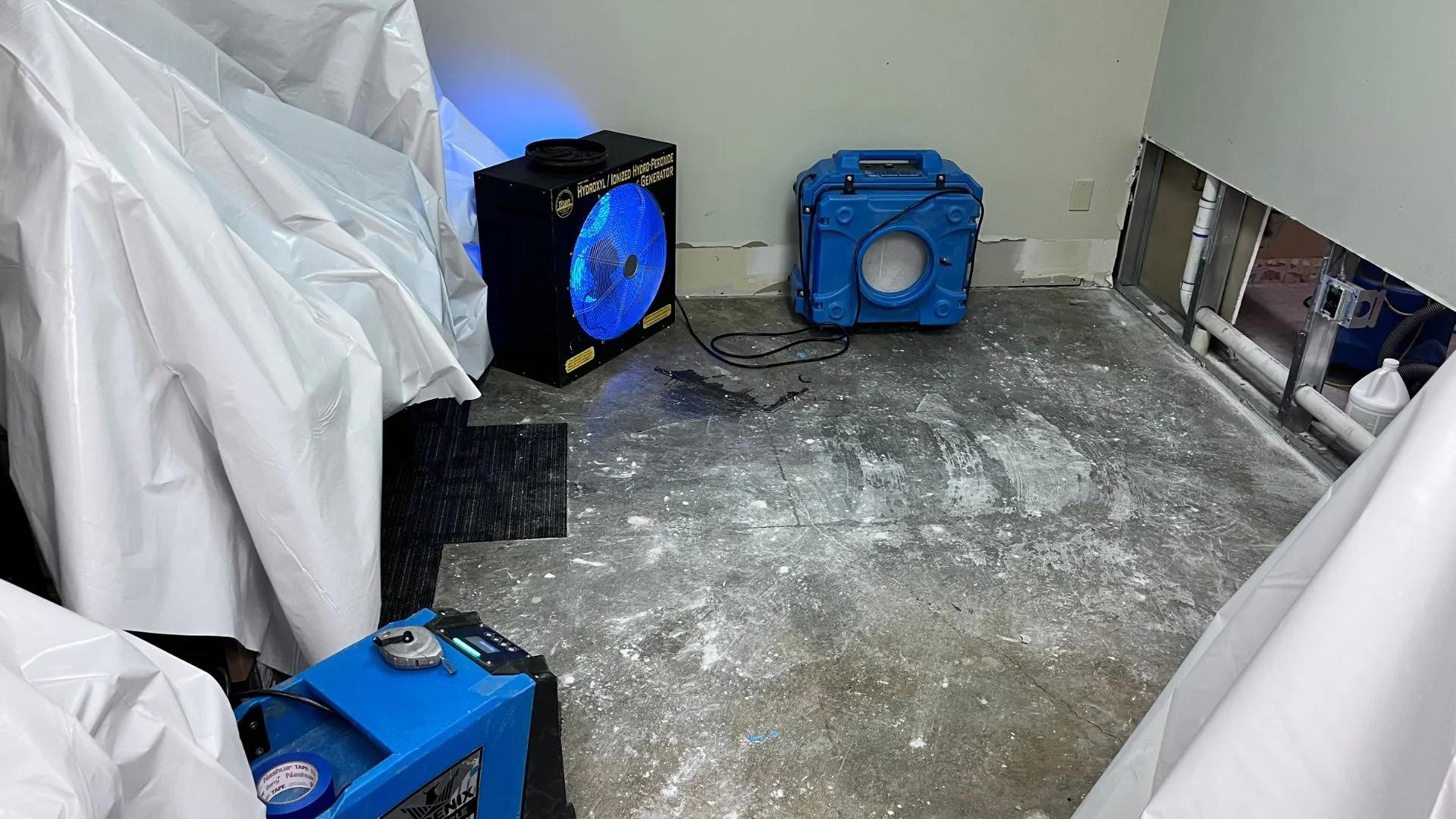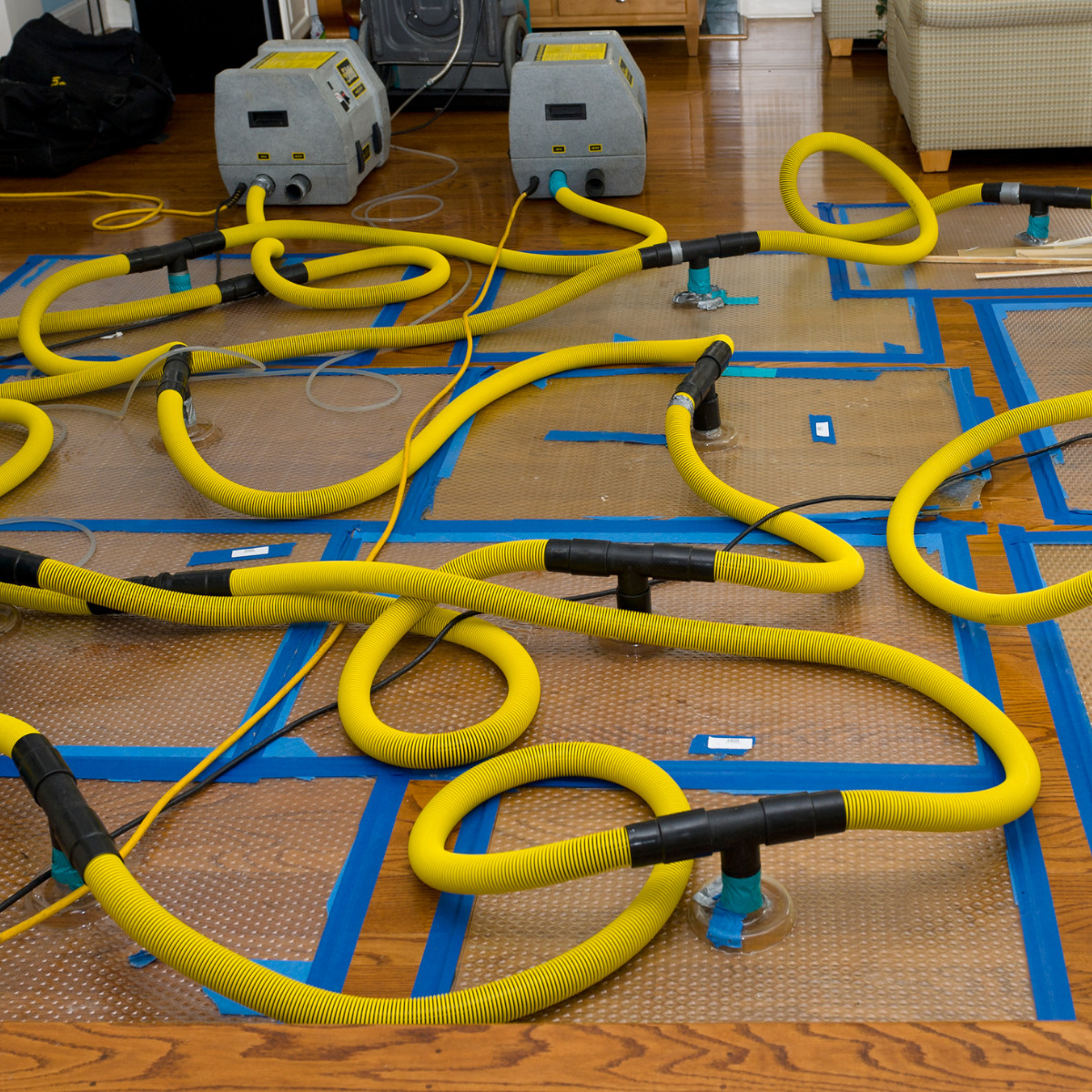Necessary Steps to Comply With for Reliable Water Damage Restoration in your house
When confronted with water damages in your house, recognizing the essential actions for efficient repair can make all the difference. You need to analyze the damages and guarantee safety before tackling the problem. Quiting the resource of water is necessary, but it's simply the start. When you've taken care of that, there's a collection of actions you have to take to safeguard your building from more issues. Allow's discover what you need to do next.
Assess the Damage
When you discover water damage in your house, the initial step is to examine the damages thoroughly. Beginning by identifying the source of the water breach. Look for leakages, ruptured pipelines, or various other issues triggering the issue. Next off, examine the influenced areas for visible indicators of damage, including warping, mold and mildew, or staining growth. Don't forget to look in surprise areas like behind wall surfaces or under flooring, as water can permeate right into these areas unnoticed.Document the damages by taking clear pictures and notes. This will certainly help you when talking about the scenario with your insurance coverage company or remediation professionals. Focus on the kind of products influenced, as various materials need different remediation methods. Examine the degree of the damage. Is it considerable or small? Comprehending the scope will certainly lead you in making a decision whether to handle it yourself or employ the professionals for a much more comprehensive restoration procedure.

Make sure Security
Before you start any type of repair work, assuring your security is vital. Examine the condition of your home. If the water's deep or if you observe electrical risks, don't go into the area. Turn off the power and gas supply to avoid crashes. Put on safety gear like masks, boots, and gloves to shield yourself from impurities or mold.It's essential to remain knowledgeable about your environments; look for slippery surfaces and sharp things. If the water is from a sewage back-up, treat it as dangerous waste. Maintain animals and children away from affected locations to prevent exposure.Once you've taken these preventative measures, you can wage the remediation process. Remember, your safety precedes, and if you're ever unclear, it's ideal to speak with an expert. Taking these actions will certainly aid assure you prepare to tackle the remediation securely and properly.
Stop the Source of Water
After guaranteeing your security, the next step is to quit the source of water. Recognize where the leak is coming from. It could be a burst pipe, a defective home appliance, and even heavy rain entering via a harmed roof covering. If it's a plumbing concern, turn off the primary supply of water to your home to avoid additional flooding. For appliances, unplug them and turn off their water valves.If the resource is outdoors, like rainwater, try to divert it far from your home using sandbags or various other obstacles. For minor leaks, you could be able to use tape or a sealant momentarily until an expert can repair it. Remember, attending to the resource quickly is important to lessening damage and stopping mold and mildew growth. When you have actually stopped the water, you'll remain in a better setting to go on to the following actions in the restoration process.

Remove Excess Water
Act swiftly to remove excess water, as standing water can cause more considerable damage and mold and mildew growth. Initially, gather your tools: a wet/dry vacuum, pails, and towels. If the water is superficial, you can make use of towels to soak up the moisture. For much deeper water, a wet/dry vacuum is your finest wager. Make sure to empty the vacuum cleaner frequently to prevent overflow.If the water is infected, like from a sewage backup, use safety equipment, including handwear covers and masks, to maintain on your own safe. When you have actually removed as much water as possible, look for hidden pockets of moisture in corners and under furnishings, as these can nurture mold.Don' t neglect to transform off electric devices and power electrical outlets in damp locations to stop dangers. This first action is vital in decreasing damage and establishing the phase for a successful reconstruction process.
Dry and Dehumidify the Location
Once you have actually removed the excess water, it's important to completely dry and evaporate the location completely. Beginning by utilizing dehumidifiers effectively to pull dampness out of the air and stop mold development. Maintain an eye on humidity degrees to assure the area dries out totally.
Eliminate Standing Water
To efficiently deal with water damages, you need to focus on eliminating standing water as swiftly as feasible. Start by gathering necessary tools, like a wet/dry vacuum or a pump, relying on the quantity of water. If the water is superficial, a vacuum ought to suffice. For bigger quantities, a pump is extra reliable. While functioning, ensure to use protective equipment to maintain yourself safe from contaminants. As you get rid of the water, focus on hidden areas like under furniture or in corners where water might gather. Your space will certainly begin to dry out as soon as you have actually removed the majority. This step is vital, as remaining water can lead to mold and mildew growth and more comprehensive damages.
Use Dehumidifiers Effectively
Just how can you effectively use dehumidifiers to completely dry and dehumidify your area? Beginning by putting your dehumidifier in one of the most afflicted location, preferably where water damage is most extreme. Ensure to shut all doors and windows to develop a closed setting. Turn on the dehumidifier and established it to the appropriate moisture level, generally around 30-50%. Empty the water collection container frequently, or think about making use of a model with a constant drainage choice for benefit. Ideally, use fans to enhance airflow, assisting the dehumidifier job a lot more efficiently. Keep the dehumidifier running up until you're confident that the area is completely dried out, protecting against mold and mildew development and additional damage (Flood Damage Restoration). This step is essential for effective water damages reconstruction
Monitor Moisture Levels
Monitoring humidity degrees is crucial during the drying procedure, as it assists assure your room stays cost-free from excess moisture. Purchase a trustworthy hygrometer to track moisture precisely. Preferably, you want to maintain here degrees in between 30% and 50%. If moisture readings rise over this variety, you may require to adjust your dehumidifiers or fans to boost airflow. Inspect the readings frequently, particularly in locations susceptible to moisture, like cellars or washrooms. Consider increasing air flow or making use of extra dehumidifiers if you discover persistent high humidity. Staying on top of these degrees not just speeds up the drying out process yet likewise stops mold and mildew development, guaranteeing your home stays comfy and secure.
Tidy and Disinfect Affected Surfaces

Restore and Repair Your Home
After cleansing and sanitizing the influenced areas, it's time to recover and repair your home. Begin by examining the damage. Check for architectural issues, like deteriorated walls or floors, and deal with any kind of required repairs. Replacing damaged drywall or floor covering is vital for both looks and safety.If your furniture or items were impacted, take into consideration whether they can be restored or require replacement. Tidy or professionally recover products where possible.Next, touch and paint walls up any type of locations that require focus. This not only improves look yet additionally protects surfaces from future water damage.Don' t fail to remember to examine your pipes and appliances for leaks, making sure every little thing's functioning correctly. Lastly, think about mounting a dehumidifier to stop future moisture problems. By taking these actions, you'll recover your home to its previous glory and develop a much safer living environment.
Frequently Asked Questions
The Length Of Time Does Water Damage Repair Commonly Take?
Water damage repair usually takes anywhere from a few days to a number of weeks, depending upon the degree of the damage (Water Damage Repair). You'll desire to analyze the scenario quickly to minimize further problems and ensure proper remediation
Will My Insurance Cover Water Damages Reconstruction Expenses?
Your insurance coverage may cover water damages restoration expenses, but it depends on your plan. Inspect your coverage information and contact your insurance policy agent to clarify what's consisted of and what you require to sue.
Can I Take Care Of Water Damage Restoration Myself?
You can manage water damages remediation yourself, but it's crucial to analyze the circumstance initially. You could desire to call specialists if it's comprehensive. Always focus on security and guarantee you've obtained the right tools.
What Are the Indicators of Hidden Water Damages?
You may discover signs of covert water damage like warped walls, moldy smells, or staining. If your floors really feel spongy or you area mold and mildew, it's time to examine further prior to the scenario worsens.
Just How Can I Protect Against Future Water Damage in My Home?
To avoid future water damages in your house, you need to on a regular basis check pipes, seal splits, preserve gutters, and assurance appropriate water drainage. Setting up a sump pump and moisture obstacles can also help keep your space completely dry. When you uncover water damages in your home, the very first action is to analyze the damage thoroughly. Act promptly to remove excess water, as standing water can lead to a lot more substantial damages and mold and mildew growth. To properly tackle water damage, you need to concentrate on getting rid of standing water as quickly as possible. As you get rid of the water, pay attention to concealed areas like under furniture or in edges where water may collect. Water damages reconstruction commonly takes anywhere from a few days to a number of weeks, depending on the extent of the damage.